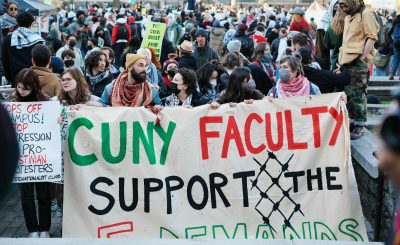By Shiann Davis
Witnessing growing racial injustices against African Americans is something that has become the new normal. There are many peaceful and profound ways to protest against the racial injustices that all people of color and ethnic backgrounds experience daily. Although young people have been involved more than ever, their voices have yet to be noticed and heard around the world. Parents play an important role in their adolescent’s lives and they can help them get involved to make positive changes.
In an article by Clint Smith of The Atlantic titled “Becoming a Parent in the Age of Black Lives Matter”, parents of African American adolescents must no longer be self-centered and now fret on the many ways their children are able to transition within this era of disparity, creating “a new reality for many black parents who did not have children when the Movement for Black Lives began, but who have young children now in 2020.” Many parents fear for not only adolescents who want major change, but underage children who will soon have their most precious memories clouded with fear and a child witnessing the death of their father.
However, how can they make these changes within our community without going against the system, police enforcement, and government? Parents who gave birth to children of color now fear what the future may hold for them. They fear that if they go anywhere in public, they will be racially profiled or even arrested just because of a stereotype, and the color of their skin. No one should have to go through a situation where they are harassed by law enforcement or an individual who simply is just racist. Two devastating events, the deaths of George Floyd and Breonna Taylor will forever touch the lives of many young African American people and they have led to an unrest in America, which calls on young people to make change happen.
Now, we also see that more young adolescents are voting in this year’s election to manifest those changes. How can we as a community fight together, alongside young individuals, teaching them the appropriate ways in how America can, in fact, be great again? How can the parents of millennials resolve the issues of racial injustice amongst African Americans, and lessen racial profiling when it comes to police enforcements having too much power?
Parents must also be mindful of how young adolescents are safeguarding themselves during COVID-19, ensuring their safety while protesting out on the streets. The article titled “How to Talk with Your Teens About Racial Protests” published by Boston’s Children’s Hospital encourages parents to have a conversation with their children on equality and racism by starting to post positive messages on social media in support of the movement. Parents are not always keeping watch of what their child is doing online, but it is suggested to give them a pep talk on the do’s and don’ts so they won’t post anything that goes against what they stand for.
A sensitive case such as the BLM movement must be approached with caution, for there are some individuals that are against the movement. Young adolescents must be prepared in defense, just in case they too come across a situation where they are racially profiled and targeted by law enforcement during protests. Luckily, that’s what the purpose of a parent’s guidance is for: to carefully guide their child in the right direction.
Adolescents and young children who are old enough to understand the events leading up to the movement may be overwhelmed with stress, or they may not know how to start or begin the process of fighting for racial justice and equality. Oppression, like slavery and unfair treatment against African Americans, has been going on for quite a while, but it has worsened over the last several years ever since Trump was elected into office, according to the Pew Research Center.
Young activists all over the world have made prominent changes within their community. With the help of a lending hand by those who support young activist, like then 19-year-old Shahidi. Shahidi is known for fighting for social diversity in Hollywood as a young actress. She was determined to have her voice be heard, which then granted her a prestigious recommendation letter by President Obama and helped organized Michelle Obama’s “Let Girls Learn” education initiative, noted by an article on the Insider (2019). She stands for equal rights and opportunity for both young male and female adolescents, such as equal pay without women being discouraged and being paid less.
It is now clear and evident that young supporters must take gradual steps and look up to a source of motivation to lessen their fears, such as the activist mentioned above, of what the outcome of this movement may be. If they are skeptical or unsure on how to begin their involvement, they must have their parents, or someone they can trust, by their side, supporting their every move. Parents should be able to contribute to their child’s process within the movement, since they are a major difference today. Young people have become the new voices of American culture.
Amid COVID-19 and crowds filling the streets of New York City, parents should insist on their child’s safety, so they do not put themselves at risk. Before transitioning into supporting the BLM movement, people must be fully educated on what they want to fight against. Wired Magazine suggest that you must study your surroundings and help those around you to let your message be heard as loud as possible. Young people and parents must be aware of their rights and knowing what they will be getting themselves into before they work as a team to fight against racial inequality.




